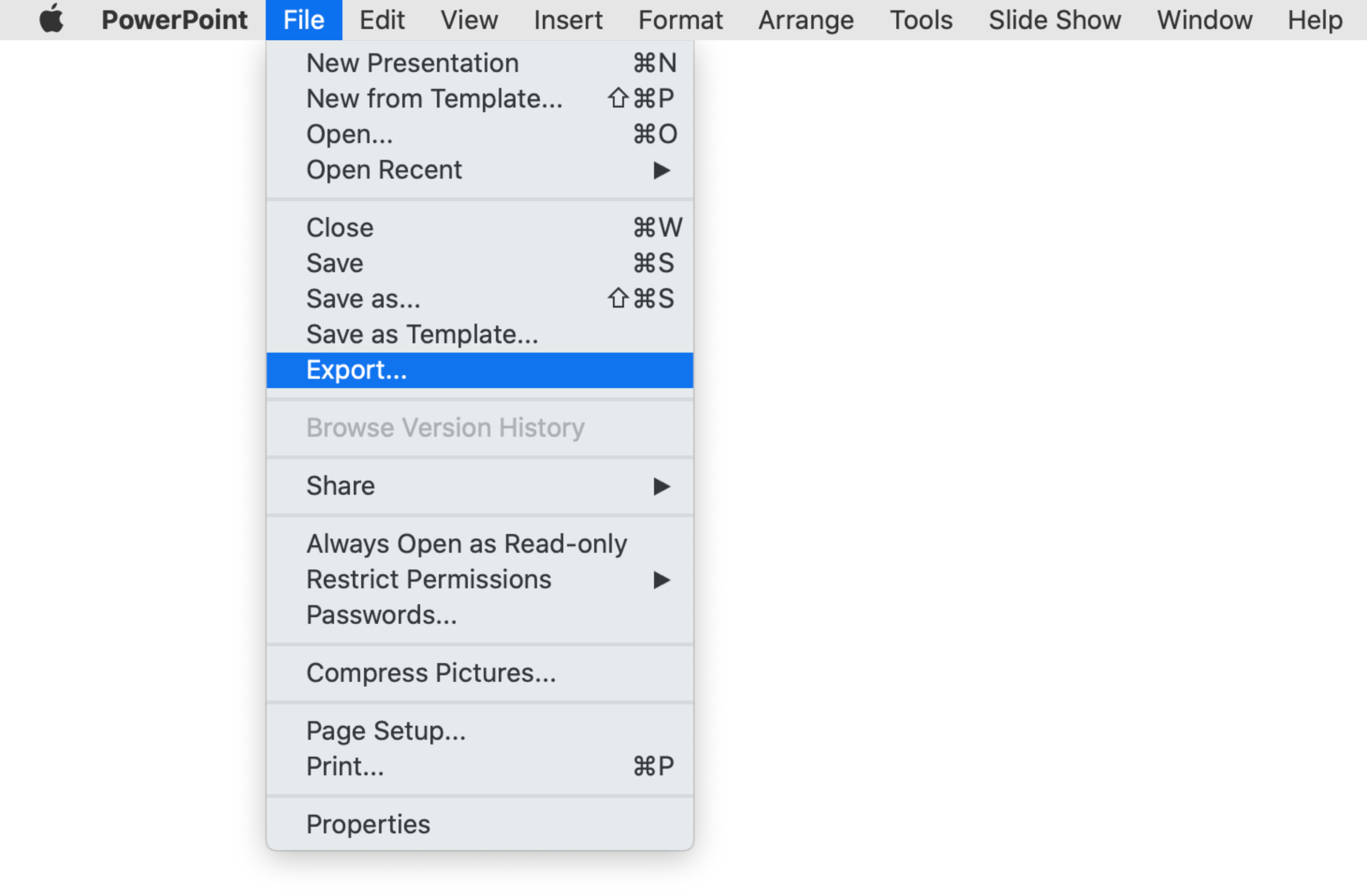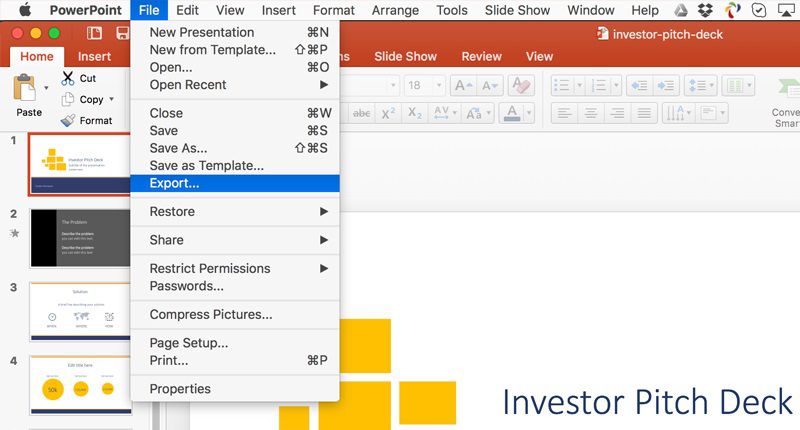
- Compressing powerpoint presentation using powerpoint for mac how to#
- Compressing powerpoint presentation using powerpoint for mac windows#
On the Format tab, click the Compress Pictures. Step 2: Double-click on one picture, and then you will see the Picture Tools appear in the menu bar. Step 1: Open the PowerPoint presentation.
Compressing powerpoint presentation using powerpoint for mac windows#
Part 1: Compress pictures to reduce PowerPoint file size in Office 2016 for Windows
Compressing powerpoint presentation using powerpoint for mac how to#
Following is how to compress pictures in PowerPoint 2016 for Windows and Mac. You can’t remove them, but you can compress them to a smaller size, which not only will not affect picture viewing effect but also can reduce the PowerPoint 2016 file size. The pictures may be an indispensable part of your presentation. Now, this post will show you how to reduce PowerPoint file size in Office 2016 for Windows or Mac. Then is there any way to make a large PowerPoint file smaller? Yes. However, it is not so convenient to store, share, send, or upload a large file. Move your mouse over preset effects to preview how they would look on your image, and then click on it to apply it.To increase the view of a PowerPoint presentation, a large number of pictures are usually added to slides, which makes the entire PowerPoint file very large in size. Another tool is Artistic Effects, found in the Adjust Group. You can play with the brightness, contrast, and color using the options in the Adjust Group or modify the shape, border and effect in the Picture Styles Group. This tool does well with single color removal, but it can also work on more complicated backgrounds as well. This Ribbon allows you to make adjustments to the area that will be removed. To make the background of an image transparent, so it blends to your background, click on the image and go to the Picture Tools Format Ribbon.Ĭlick on the Remove Background icon, then PowerPoint will guess which part of the image to remove (shown below in purple), and bring up the Background Removal Ribbon. If you have cropped an image, the cropped area is now gone permanently. To compress the image/shape, click the Compress Pictures icon – this will make your presentation file size smaller. You can get the cropped area back by clicking the Reset Picture icon in the Adjust Group. Note that unlike a program like Photoshop, the cropped portion of the image is still in the document unless you compress the image (as described below). Cropping handles will appear – move these by clicking and dragging, and the image will automatically be cropped. To crop the image/shape, click the Crop icon in the Picture Format Ribbon. To edit or modify the text (color, size, font, etc.), highlight the text and make the change. The text will automatically fit inside the shape. A cursor appears in the shape - start typing.

To add text to a shape, right-click and choose Edit Text…. If you want just the outline of a shape, choose No fill from the dropdown menu.

To change the color (inside or out), use the appropriate Fill (inside) or Outline (line around the image) options in the Shape (or Picture) Format Ribbon or at the right of the Home Ribbon. To modify the proportions of a shape, click, hold, and drag one of the yellow squares that appear on the shape. To rotate the image/shape, click and drag on the circle at the top.

Hold down the Shift key before you start dragging the corner to keep the image proportionate. Note that depending on the file type, your image may become distorted if you make it bigger. To resize it, click and drag one of the little squares that appear in the corners. To move it, click on it, hold, and then drag it to the desired location. The first three options will work with photos/images as well as shapes.


 0 kommentar(er)
0 kommentar(er)
